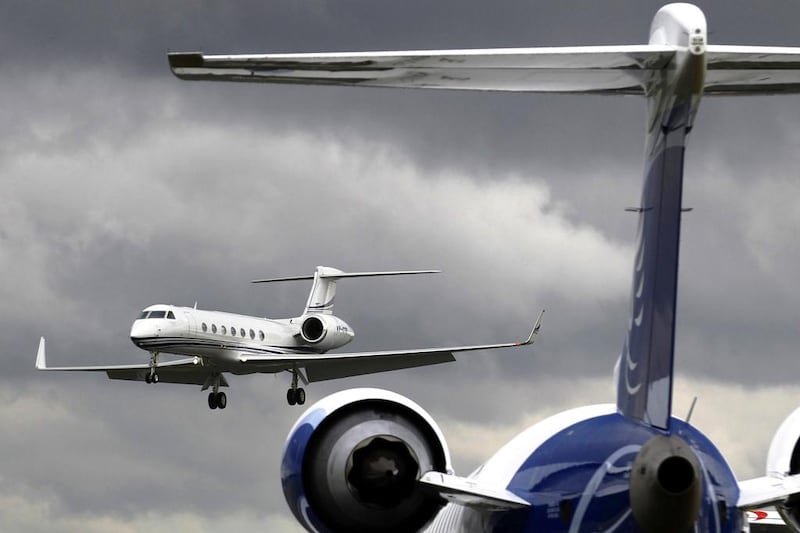It used to be about big planes in the Middle East. Now it’s about small planes in Asia.
The rampant aircraft buying of the past decade by Emirates Airline, Etihad Airways and Qatar Airways has helped to form the new hubs for long haul East-West travel.
Now the focus is switching to the spokes – and the small single-aisle planes that service them.
Gulf carriers are unlikely to be getting their chequebooks out in a big way at Farnborough this week as the record spending spree of recent years slows.
But smaller airlines from India, China and elsewhere in Asia are expected to help boost the order books of rival manufacturers Boeing and Airbus.
The bi-annual Farnborough International Airshow gets under way today amid a backdrop of faltering growth and increased competition on many international routes.
The recent cancellation of an order for 70 Airbus A350s by Emirates underscores weakening confidence in an industry worried about overcapacity and the threat of rising fuel costs amid increased tensions in Iraq and elsewhere in the Middle East.
Neither Emirates nor Etihad are expected to make aircraft purchase announcements at Farnborough, their spokespeople confirmed.
While Tim Clark, the chief executive of Emirates is at least due to attend, James Hogan, his counterpart at Etihad, is not.
Orders worth more than US$200 billion were agreed at last year’s Dubai Airshow, the largest in airshow history as Emirates, Etihad and Qatar snapped up dozens of new aircraft from the two big plane makers.
For more than a decade, the requirements of the Gulf carriers have helped to shape the look and feel of new aircraft from Boeing’s Dreamliner to the double decker A380 made by Airbus.
But with the region’s three big carriers having spent heavily in recent years to meet their aggressive growth targets, the momentum may now be slowing.
Still, Boeing issued an upbeat projection of future plane demand ahead of the opening of the Farnborough show.
It predicts demand for 36,770 airplanes worth some $5.2 trillion over the next 20 years – up 4.2 per cent from last year.
Significantly, while the past decade of airplane production has been about big planes in the Gulf, the next one is more likely to be defined by small planes in Asia.
“Based on the overwhelming amount of orders and deliveries, we see the heart of the single aisle market in the 160-seat range,” said Randy Tinseth, the vice president of marketing at Boeing Commercial Airplanes. “There’s no question that the market is converging to this size.”
Without Gulf airlines to make the headlines, the taxation and regulation-hobbled carriers of Europe lack the financial clout to invest heavily in their fleets.
Last week the International Air Transport Association (Iata) called on European governments and regulators to boost the region’s competitiveness by boosting connectivity.
“The region’s airlines are overtaxed and onerously regulated,” said Tony Tyler, Iata’s director general and chief executive. “They suffer from a chronically mismanaged air traffic management system, insufficient air capacity and infrastructure costs that are simply too expensive. It’s time to do something about it.”
Middle East carriers are expected to generate average margins of 2.6 per cent this year according to Iata – double that of Europe, where the strains of increased competition in the industry are starting to show.
Air-France KLM issued a profit warning on Tuesday after reporting a decline in average fares last month that it said reflected “the overcapacity on certain long-haul routes, notably North America and Asia, with the attendant impact on yields”. The following day Lufthansa revealed a new strategy as a response to increasingly fierce competition from Middle East carriers, which could include a long-haul budget service.
“We don’t want to be driven by change in the aviation sector; we want to be among the drivers of it,” said the Carsten Spohr, Lufthansa chief executive. “But doing so demands bold steps forward: our market is no place for half measures.”
scronin@thenational.ae
Follow us on Twitter @Ind_Insights





